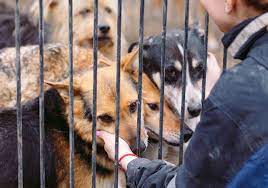Dog yeast infections are a common skin condition in dogs that can cause itching, redness, and inflammation.
The most common type of yeast infection in dogs is caused by the fungus Malassezia, which is normally found on a dog’s skin. However, when a dog’s immune system is weakened, the yeast can overgrow and cause an infection.
Table of Contents
ToggleCauses of Dog Yeast Infections
Several factors can contribute to the development of yeast infections in dogs. These include:
Imbalanced Microflora: Just like humans, dogs have a delicate balance of microorganisms on their skin and in their bodies. Any disruption to this balance can lead to an overgrowth of yeast.
Moisture and Warmth: Yeast thrives in warm and moist environments. Dogs with skin folds or floppy ears are more susceptible to yeast infections as these areas can provide the perfect breeding ground for yeast.
Allergies: Dogs with allergies, whether food allergies or environmental allergies, are more prone to yeast infections. Allergies weaken the immune system, making it easier for yeast to proliferate.
Underlying Health Conditions: Certain health conditions, such as hypothyroidism or Cushing’s disease, can weaken a dog’s immune system, making them more susceptible to yeast infections.
Symptoms of a dog yeast infections
Dog yeast infections are a common skin condition that can cause a range of symptoms in dogs. Understanding these symptoms is important for detecting and treating the infection in a timely manner. Here is a more detailed explanation of the symptoms of dog yeast infections:

Itching and scratching
One of the most common symptoms of a yeast infection in dogs is intense itching and scratching. This is due to the overgrowth of yeast on the dog’s skin, which can cause irritation and discomfort. If your dog is constantly scratching or biting at a certain area of its skin, it could be a sign of a yeast infection.
Red, inflamed skin
Another common symptom of a yeast infection in dogs is red, inflamed skin. This occurs as yeast overgrowth creates an inflammatory response in the skin. The affected area may be warm to the touch and may appear slightly swollen.
Dark, scaly patches
Yeast infections can also cause the formation of dark, scaly patches on the dog’s skin. These patches may be crusty or flaky, and may have a slightly raised appearance. They may also be accompanied by other symptoms of a yeast infection, such as itching and redness.
A strong, musty odor
A yeast infection can also produce a strong, musty odor. This odor is caused by the overgrowth of yeast on the dog’s skin, and is often described as a “yeasty” smell. If you notice a strong, musty odor coming from your dog, it could be a sign of a yeast infection.
Ear infections
Yeast infections can also occur in a dog’s ears, which can cause additional symptoms such as head shaking, redness, swelling, and discharge. If you notice any of these symptoms, it’s important to see a veterinarian for proper diagnosis and treatment.
It’s important to note that these symptoms can also be indicative of other skin conditions, so it’s best to have a veterinarian diagnose the problem and determine the best course of treatment.
Early detection and treatment of a yeast infection can help prevent the development of more serious skin conditions and keep your dog healthy and comfortable.
Conclusion
In conclusion, dog yeast infections are a common skin condition that can cause itching, redness, and inflammation in dogs.
Understanding the symptoms of a yeast infection, such as intense itching, red and inflamed skin, dark scaly patches, a strong musty odor, and ear infections, is critical for early detection and treatment.
If you suspect that your dog has a yeast infection, it’s important to see a veterinarian for a proper diagnosis and treatment plan. With prompt and effective treatment, a yeast infection can be successfully managed and prevented from becoming a more serious problem.
By paying close attention to your dog’s skin and seeking veterinary care if necessary, you can help keep your dog healthy and comfortable.









![The Ultimate Guide to Road Tripping with Your Dog [2025 Update]](https://bellabeanupdate.com/wp-content/uploads/2025/05/pexels-photo-1143369-300x209.jpeg)




















